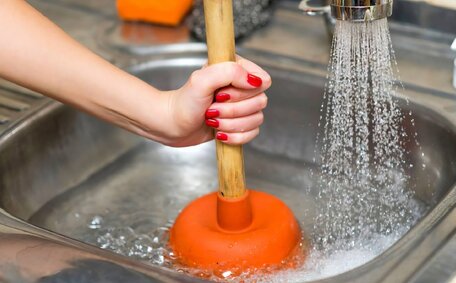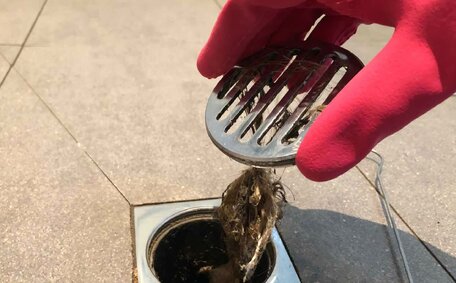Introduction to Pipe Relining
Pipe relining is an efficient, trenchless method for restoring damaged pipes without the need for full replacement. It involves inserting a jointless epoxy resin lining into the existing pipe to seal cracks, repair corrosion damage, and prevent future leaks or blockages.
For Strathfield residents with old, damaged pipes, relining provides numerous advantages over traditional pipe replacement which requires extensive excavation. The process is much faster, with minimal disruption to surrounding infrastructure or landscaping.
However, pipe relining does have limitations—most notably that it requires an existing pipe diameter large enough to accommodate the new epoxy liner. So what is the minimum pipe diameter required? Read on to become well-informed about pipe dimensions required for a successful relining project.
Typical Pipe Sizes Used in Homes
Within most Strathfield homes, the pipe diameters used vary depending on context. For main drainage lines carrying wastewater, the pipe sizes typically range from 100mm to 150mm in diameter. This allows for adequate flow volume while limiting clogs.
Smaller branch drainage pipes measuring 40mm to 50mm in diameter feed into the main lines from sinks, showers, toilets and other fixtures. At this scale, narrower pipes prevent solids buildup.
Meanwhile, water supply lines utilise a range of pipe diameters like 20mm for individual taps, 40mm for branches, and widespread use of DN20 diameter (approximately 25.4mm actual diameter) for flexible supply hoses.
Larger home renovations may also involve HVAC, fire sprinklers, or other systems needing wider 225mm main lines. However understanding the smaller pipe dimensions common behind walls allows for better context on minimum relining requirements.
Minimum Diameter Requirements for Relining
When it comes to pipe relining, there are some technical requirements regarding the minimum diameter of the original pipe. Most relining professionals recommend a starting point of 100mm diameter pipes as the bare minimum for lining.
This 100mm threshold allows for an adequately thick epoxy resin lining that can withstand pressure, provide corrosion protection, and deliver lasting repairs. Attempting to line pipes smaller than 100mm introduces challenges with curing the resin lining evenly.
It’s also important to note that the relining process effectively reduces the inner diameter by about 6mm as the epoxy resin liner adheres to the inner walls. So a 100mm pipe would decrease to around 94mm diameter after a successful relining project. This reduction is uniform however, so flow rates remain consistent.
Smaller 75mm or 50mm diameter pipes can potentially be lined on a case by case basis if pressure and flow demands are low. But sub-100mm pipes push the limitations of a quality lining application. Contacting professional plumbers to assess diameter needs is the best approach.
Ultimately pipe relining provides excellent versatility for 100mm up to 600mm diameter piping systems. This range allows for residential drainage repairs along with municipal sewer lines and larger commercial plumbing retrofits. When our team assesses Legacy pipes, minimum diameter requirements are a top consideration before relining.
Factors Affecting Minimum Diameter
When determining the minimum pipe diameter suitable for relining, several key factors come into play:
Type of Damage - The extent of damage and corrosion influences how much material needs to be added back through the epoxy resin lining. More severe degradation often necessitates starting with a larger diameter pipe to allow for sufficient lining thickness after reduction.
Pipe Material - Materials like clay and concrete require thicker linings and fill layers compared to PVC and other plastic pipes. Their rougher inner wall textures also contribute to the 6mm post-lining reduction. So material type plays a role in minimum size.
Existing Pipe Diameter - As mentioned for residential lines, 100mm tends to be the minimum starting point before relining becomes impractical. But the existing diameter still allows flexibility in resin lining thickness and final inner diameter of the rehabilitated pipe.
Improved flow rates and self-cleansing velocities are beneficial side effects of relining versus pipe replacement. By optimising corrosion damage repairs without needing to upsizing pipe diameters, relativity improves flow over badly corroded pipes.
Considering these key factors with an on-site inspection, our team can advise if smaller legacy pipes down to 75mm might accommodate linings. But in general, 100mm presents the best compromise between ling integrity and minimum diameter requirements.
Building Code Regulations for Pipe Diameters
When it comes to plumbing work in Strathfield, plumbers must know about and adhere to the latest version of the Plumbing Code of Australia enforced locally. This national code stipulates minimum pipe diameter requirements for different plumbing systems.
Below are key regulated pipe diameters to keep in mind for residential contexts:
- Soil and Waste Pipes - Minimum DN100 diameter (approximately 103mm actual inner diameter)
- Stormwater Drainage Pipes - Minimum DN100
- Hot and Cold Water Supply Pipes - Minimum DN20 (approximately 20mm actual inner diameter)
For non-residential buildings like commercial spaces, the code also regulates larger pipe and drain diameters depending on number of fixture units and drainage fixture loads.
What does this mean when assessing pipes for relining? Essentially, the existing inner pipe diameter needs to meet or exceed these legal minimum sizes after the 6mm reduction from adding the internal epoxy lining.
A 100mm clay sewer line to be relined would need to finish with an approximately 94mm inner diameter. This still exceeds the regulated minimum DN100 size for soil pipes. But for smaller 75mm drain pipes, post-lining diameter might fall below regulations.
Understanding these mandated minimum diameters allows our team to advise on pipe relining serviceability. We aim to bring damaged pipes up to current code through efficient trenchless rehabilitation.
Pipe Material Options and Suitability
When it comes to pipe relining, the existing pipe material is a major factor influencing suitability and process requirements. Our team assesses and can reline piping made from several material types:
- PVC - With a smooth inner wall and consistent diameters, PVC drain pipes are prime candidates for relining. The epoxy resin bonds well to cure a durable lining.
- Concrete - Concrete pipes are common for sewer lines and larger drainages. Their roughness necessitates thicker linings but they can be relined.
- Clay - Like concrete, clay’s texture allows solid resin adhesion. But clay’s propensity for cracks and offsets makes thorough prepping critical.
- Steel - Corroded steel pipes often present the ideal scenario for trenchless relining instead of replacement.
- Cast Iron - Ageing iron pipes with substantial corrosion damage can also be restored via epoxy lining.
In all cases, the condition, dimensions, connections and configuration of existing pipes dictate what materials are optimal for rehabilitation. Proper liner adhesion and curing depends on customising methods and resins to each pipe system. This expertise in material selection and suitability makes professional relining services a smart solution.
Cost Considerations for Pipe Diameters
When weighing pipe relining costs, the existing pipe diameter plays a significant role. Wider pipes generally require more lining material and longer installation times which increase project costs. But they also allow for thicker, more durable resin applications.
As a rule of thumb, 100mm to 150mm pipes represent an economical size range for refurbishment versus complete drainage replacement. Smaller 75mm pipes can still be cost effective to reline if accessible and structurally sound.
Primary price factors include:
- Pipe Dimensions - Diameter and length dictate resin and liner volumes needed.
- Access Considerations - Tight, complex spaces drive up equipment costs and labour time.
- Severity of Damage - More corrosion equates to thicker liners and more prep work.
- Commercial vs Residential - Larger commercial scale ups the pricing but also the value delivered.
Compared to ripping out and replacing aged piping, professional epoxy relining still delivers immense savings in most situations. The trenchless process also keeps environmental impacts to a minimum versus traditional pipe installations.
During consultations, our team provides transparent quotes accounting for diameter and other cost factors. We also highlight the dramatic savings over full drainage replacement. In most cases, homeowners and businesses realise quick returns on investment from pipe relining.
When to Hire a Professional for Relining
Attempting DIY pipe relining seems appealing to save on costs, but poses major risks best avoided. The technical nature of properly assessing damage, selecting suitable materials, and executing relining work requires professional expertise for success.
Signs it’s best bringing in specialty plumbers include:
- Recurring drain clogs or sewer backups suggesting internal corrosion damage
- Presence of roots or mineral deposits inside pipes seen via camera inspection
- Significant visible pipe corrosion, cracks, leaks or failure points
- Original pipe materials dating over 50 years old like clay or ageing iron
- Previous spot repairs or patches failing to resolve drainage issues
- Plumbing issues involving older high-rise buildings or multi-unit properties
In cases like these where underlying problems persist, a trenchless pipe relining can restore functionality and prevent future headaches. But the process demands experience evaluating pipe conditions, customising durable epoxy resins, and methodically installing liners.
For Strathfield residents and businesses entrusting all your pipe relining services to our professional local plumbers, first-hand drainage knowledge delivers peace of mind. With roots established serving the Strathfield community since 1985, call our team at 1300 349 338 or email us to discuss relining solutions.
Conclusion and Next Steps
When it comes to restoring damaged drainage and sewer pipes, epoxy relining provides an efficient and durable trenchless rehabilitation solution over traditional pipe replacement. For Strathfield homeowners and businesses, understanding the minimum 100mm diameter requirements, along with properly evaluating existing pipe conditions, facilitates effective repairs.
By following regulated size guidelines, factoring key influences like corrosion extent and pipe materials, and consulting licenced professionals, pipe relining succeeds in sustainably upgrading aged pipe systems. Customised epoxy resins cure to form lasting barriers that extend service life an additional 15 years or more.
To proactively address persistent drainage issues involving older, degraded pipes, contact our team for reliable local plumber services. To proactively address persistent drainage issues involving older, degraded pipes, contact our team for reliable local plumber services.
With roots serving the Strathfield community since 1985, trust us to provide accurate pipe assessments and Facilitate seamless relining projects.
Trenchless pipe relining keeps costs low, minimises construction impacts to property, and delivers long-lasting functionality. Partnering with our specialist plumbers brings peace of mind through transparent guidance and workmanship warranties. Give us a call today to evaluate your piping issues, weigh relining options, and map out an affordable rehabilitation plan meeting building regulations.





